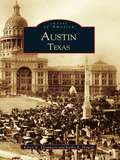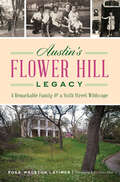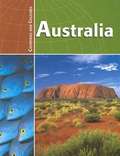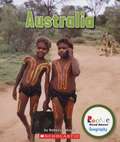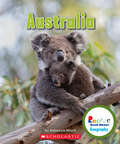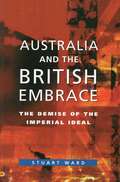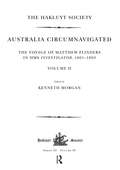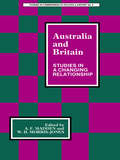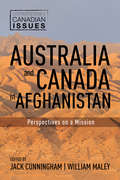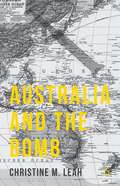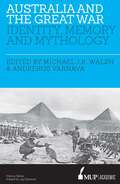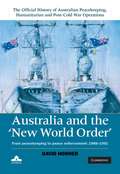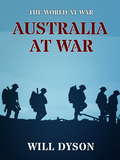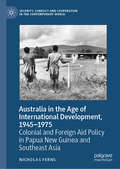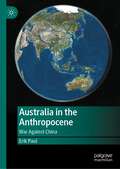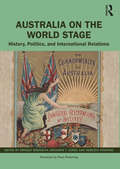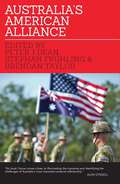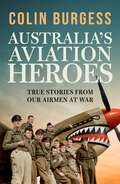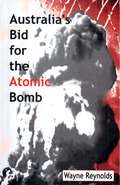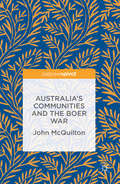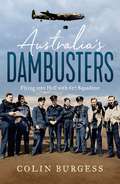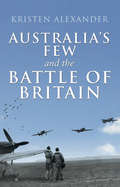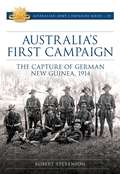- Table View
- List View
Austin, Texas
by Kathy R. Howell Karen R. ThompsonWhen General Sam Houston's Texas army defeated Mexican General Santa Anna at the Battle of San Jacinto on April 21, 1836, the Republic of Texas was born. Austin, located on the banks of the Colorado River, was laid out as the capital city in 1839, and has remained the capital since statehood in 1846. Featured here in over 200 vintage photographs is the history of this independent city, and the people who made it what it is today. Land agent Stephen F. Austin brought the first Anglo settlers to the Spanish territory in 1821 and guided them until independence in 1836. Seen here are the images that capture the spirit of those original pioneers and their achievements, including the French Legation, the construction of the capitol, and the Texas governor's mansion, the oldest governor's residence west of the Mississippi. Also pictured are the familiar faces of Austin's long history, including Austin's first mayor, Edwin Waller, and past governor Alan Shivers.
Austin’s Flower Hill Legacy: A Remarkable Family & a Sixth Street Wildscape (Landmarks)
by Rosa Walston LatimerFor nearly a century and a half, the Smoot family "cooperated with nature" to create the vibrant Texas wildscape of the Flower Hill Estate on West Sixth Street. But the generosity of spirit that cultivated that sanctuary extends beyond the iron fence surrounding the property. Institutions like the Central Presbyterian Church, the Austin Presbyterian Theological Seminary, the Austin American-Statesman, the Texas state capitol, The University of Texas and Travis and Austin High Schools all owe an incalculable debt to Flower Hill residents. Author Rosa Latimer traces the positive legacy of Flower Hill and the influential Austin family who lived there.
Australia (Countries and cultures)
by Tracey BoraasAn introduction to the geography, history, economy, culture, and people of Australia.
Australia (Rookie Read-About Geography)
by Rebecca E. HirschPresents a simple introduction to Australia, focusing on its geographical features, people and native animals.
Australia (Rookie Read-About Geography: Continents)
by Rebecca HirschAn introcuction to Australia, focusing on its geographical features, people and native animalsRookie Read-About: Continents series gives the youngest reader (Ages 3-6) an introduction to the components that make each continent distinctive and exceptional. Readers will get to know each continents' geography, history, and wildlife.
Australia 1942
by Peter J. DeanIn 1942, the shadow of modern war reached Australia's shores for the first time. In this compelling volume, leading historians explore why 1942 was such a pivotal year in Australia's history and explain how the nation confronted some of its greatest challenges. This broad ranging study covers key issues from political, economic and home front reform to the establishment of a new partnership with the United States; the role of the Air Force and the Navy; the bombing of Darwin; as well as the battles of Kokoda, Milne Bay, the Beachheads and Guadalcanal. Australia 1942 provides a unique and in-depth exploration of the controversy surrounding the potential for invasion. Japanese and Australian historians offer perspectives on Japanese military intentions and strategies towards Australia and the South Pacific. Generously illustrated, it is essential reading for anyone interested in one of Australia's most decisive and critical years.
Australia 1944–45
by Peter J. DeanThe years 1944 and 1945 were pivotal in the development of Australia's approach to strategy during the Second World War and beyond. While the main battlefront of the Pacific War had moved further north, Australian air, land and sea forces continued to make a significant contribution to the Allied campaign and towards achieving Australia's strategic interests and objectives. In New Guinea, Australian operations secured territories and released men from service, while in Borneo a highly successful campaign was clouded by uncertain motives and questionable strategy. Australia 1944–45: Victory in the Pacific examines this complex and fascinating period, which has been largely under-represented in Australian military history. Peter Dean leads a team of highly regarded military historians in assessing Australian, Allied and Japanese strategies, the conduct of the campaigns in the Southwest Pacific Area and Australia's significant role in achieving victory.
Australia And The British Embrace: The Demise of the Imperial Ideal
by Stuart WardUntil a generation ago, 'Britishness' lay at the heart of Australian political culture. How and why did this fundamental idea lose its meaning for Australians and their political institutions? The popular view is that the British ideal succumbed to a triumphant, long-thwarted Australian nationalism. The reality is much more complex. Having weighed the documentary evidence, Stuart Ward vigorously argues that it was not Australia but the 'Mother Country' that set the pace. The critical move was the Macmillan Government's decision in the early 1960s to seek membership of the European Economic Community. Thereafter, the ties of imperial sentiment and the dictates of national self-interest were essentially irreconcilable. Australia's attachment to being British was profoundly shaken, and the contours of Australian nationhood were irreversibly redrawn. Australia and the British Embrace is an engrossing account of the unravelling of Britishness in Australian political life. The consequences of that unravelling continue to dominate Australian politics—from multiculturalism to Aboriginal reconciliation, engagement with Asia and, above all, the prospect of a republic.
Australia Circumnavigated. The Voyage of Matthew Flinders in HMS Investigator, 1801-1803 / Volume II: The Voyage Of Matthew Flinders In Hms Investigator, 1801-1803. Volume I (Hakluyt Society, Third Series #28 And 29)
by Kenneth MorganThis two-volume work provides the first edited publication of Matthew Flinders’s fair journals from the circumnavigation of Australia in 1801-1803 in HMS Investigator, and of the ’Memoir’ he wrote to accompany his journals and charts. These are among the most important primary texts in Australian maritime history and European voyaging in the Pacific. Flinders was the first explorer to circumnavigate Australia. He was also largely responsible for giving Australia its name. His voyage was supported by the Admiralty, the Navy Board, the East India Company and the patronage of Sir Joseph Banks, President of the Royal Society. Banks ensured that the Investigator expedition included scientific gentlemen to document Australia’s flora, fauna, geology and landscape features. The botanist Robert Brown, botanical painter Ferdinand Bauer, landscape artist William Westall and the gardener Peter Good were all members of the voyage. After landfall at Cape Leeuwin, Flinders sailed anti-clockwise round the whole continent, returning to Port Jackson when the ship became unseaworthy. After a series of misfortunes, including a shipwreck and a long detention at the Ile de France (now Mauritius), Flinders returned to England in 1810. He devoted the last four years of his life to preparing A Voyage to Terra Australis, published in two volumes, and an atlas. Flinders died on 19 July 1814 at the age of forty. The fair journals edited here comprise a daily log with full nautical information and ’remarks’ on the coastal landscape, the achievements of previous navigators in Australian waters, encounters with Aborigines and Macassan trepangers, naval routines, scientific findings, and Flinders’s surveying and charting. The journals also include instructions for the voyage and some additional correspondence. The ’Memoir’ explains Flinders’ methodology in compiling his journals and charts and the purpose and content of his surveys. This edition has a substantial introduction
Australia and Britain: Studies in a Changing Relationship
by James Homs Wyndraeth Humphreys Morris-JonesThis title available in eBook format. Click here for more information.Visit our eBookstore at: www.ebookstore.tandf.co.uk.
Australia and Canada in Afghanistan: Perspectives on a Mission
by William Maley Jack CunninghamAfghanistan is a long way from both Canada and Australia, but from 2001, fate conspired to bring the three countries together. Following the attacks of September 11, 2001, Australia and Canada joined the U.S. and other Western allies in attacking al-Qaeda bases in Afghanistan. Operation Enduring Freedom began on October 4, 2001, but this was only the beginning of a much longer engagement in Afghanistan for both Canada and Australia, with a legacy much more ambiguous than the initial campaign had promised. Australia and Canada in Afghanistan: Perspectives on a Mission offers twelve essays from distinguished experts and decision-makers involved in the war. Wide-ranging in scope, their work offers fresh analyses of the Afghan War and on Australia’s and Canada’s contributions to it.
Australia and the Bomb
by Christine M. LeahThis book is a historical and strategic analysis of the nuclear dimension of the US alliance with Australia, Australia's relationship with nuclear weapons, nuclear strategy, and US extended nuclear deterrence.
Australia and the Great War: Identity, Memory and Mythology
by Andrekos Varnava Michael Jk WalshAustralia and the Great War explores both the immediate and long-term consequences of the war on this complex relationship, looking in particular at identity, history, gender, propaganda, economics and nationalism.This multidisciplinary collection of essays unveils the creation and subsequent [mis]use of histories and mythologies while considering the necessity and nature of both remembering, and forgetting, war.
Australia and the New World Order
by David HornerThis volume of the Official History of Australian Peacekeeping, Humanitarian and Post-Cold War Operations is the first comprehensive study of Australia's role in the peacekeeping and peace enforcement operations that developed at the end of the Cold War. It recounts vital missions including Namibia (1989-90), Iran (1988-90) and Pakistan/Afghanistan (1989-93), and focuses primarily on Australia's reaction to Iraq's invasion of Kuwait in 1990, including its maritime interception operations, and its controversial participation in the 1991 Gulf War. With exclusive access to Australian Government records and through extensive interviews, David Horner explains the high-level political background to these activities and analyses the conduct of the missions. He brings to life the little-known, yet remarkable stories of many individuals who took part. This is an authoritative and compelling history of how members of the Australian Defence Force engaged with the world at a crucial time in international affairs.
Australia at War: A Winter Record On The Somme And At The Ypres During The Campaigns Of 1916 And 1917 (The World At War)
by Will DysonA winter record made by Will Dyson on the Somme and at Ypres during the campaigns of 1916 and 1917; with an introduction by G.K. Chesterton.
Australia in the Age of International Development, 1945–1975: Colonial and Foreign Aid Policy in Papua New Guinea and Southeast Asia (Security, Conflict and Cooperation in the Contemporary World)
by Nicholas FernsThis book examines Australian colonial and foreign aid policy towards Papua New Guinea and Southeast Asia in the age of international development (1945–1975). During this period, the academic and political understandings of development consolidated and informed Australian attempts to provide economic assistance to the poorer regions to its north. Development was central to the Australian colonial administration of PNG, as well as its Colombo Plan aid in Asia. In addition to examining Australia’s perception of international development, this book also demonstrates how these debates and policies informed Australia’s understanding of its own development. This manifested itself most clearly in Australia’s behavior at the 1964 United Nations Conference on Trade and Development (UNCTAD). The book concludes with a discussion of development and Australian foreign aid in the decade leading up to Papua New Guinea’s independence, achieved in 1975.
Australia in the Anthropocene: War Against China
by Erik PaulThe book is a study on planetary realism in a critical analysis of Australia in the age of the Anthropocene. It contextualises Australia in the degradation of the biosphere deeply harmful to humanity’s wellbeing, accelerating the threat of nuclear war and the tensions of a declining democracy. The Anthropocene is a critical period, threatening the viability of the Australian nation-state. It involves the decarbonisation of the economy driven by domestic and foreign corporate power, and the geopolitics of world domination as a close ally of the US. Australia’s militarisation for war against China must be contested in the pursuit for a green and just new deal framed in the foreign policy of reconciliation with Asia, including a fully cooperative entente with China
Australia on the World Stage: History, Politics, and International Relations
by Benjamin T. Jones Rebecca Strating Bridget BrooklynAustralia on the World Stage: History, Politics, and International Relations offers a fresh examination of Australia’s past and present. From the complex interactions of First Nations to modern international relations with significant partners and allies, it examines the forces that have influenced the place now called Australia both historically and today. It is a unique history told in two parts. The first half of the book examines the way Australia acted on the world stage both before and after British colonisation. It outlines the evolution of Australia’s relationship with the United Kingdom, first as colonies, then a dominion, and finally as an independent nation. It finishes with a First Nations perspective on foreign relations. The second half of the book provides a wide-ranging history of Australia’s dealings with major powers, the United States and China, as well as its relationships with New Zealand, Aotearoa, the Pacific Islands, Indonesia, Japan, Antarctica, and the United Nations. Written by leading and emerging researchers in their fields, this book encourages the reader to consider Australia’s performance on the world stage over the longue durée, well before the word ‘Australia’ was ever dreamt up. This interdisciplinary work challenges lazy stereotypes that see Australia's international history as fixed and uncontested. In revisiting Australia’s foreign relations, this work also asks the reader to consider its future directions.
Australia's American Alliance: Towards a New Era?
by Peter Dean Stephan Frühling Brendan TaylorThis book is specifically designed as a companion volume to Australia's Defence: Towards a New Era? The Australia-United States Alliance has been critical to Australian foreign and defence policy since the ANZUS Treaty was signed in 1951. For 63 years it has been an enduring feature of Australian defence planning, yet the contemporary alliance is, arguably, in one of the more important phases of reinterpretation in its long history. While the Alliance by its very nature is a bi-lateral relationship, this book will therefore specifically focus on Australian perspectives and policy choices, while providing context on the role of the United States in the Asia-Pacific and its position as a global power.
Australia's Aviation Heroes: True stories from our airmen at war
by Colin BurgessFrom the author of bestselling Sisters in Captivity, seven remarkable stories of men who served from WWI to Korea – their wartime exploits and achievements through aviation. Based on personal interviews conducted by the author over many years, Australia&’s Aviation Heroes celebrates the achievements of extraordinary men in extraordinary times. Meet Jack Treacy, the WWI fighter pilot who came perilously close to joining the Red Baron in his grave. Relive the story of Ernie Guest, a man determined to fly against all odds after storming into battle on the bloody shores of Anzac Cove, Gallipoli, on 25 April 1915. George Allan, the Scottish-born pilot who survived that same war, went on to become one of the great pioneers in Australian aviation history. Then there is the harrowing tale of Joe Herman, the bomber pilot blown out of his doomed aircraft over war-torn Europe without a parachute – who lived to tell his story. We get to know Clive Caldwell, Australia&’s greatest WWII fighter pilot, as well as Don Bennett, the Queenslander who developed and led Bomber Command&’s legendary Pathfinder Force. During the Korean War, Phillip Zupp was the first Australian to be recommended for a Purple Heart. These are the captivating stories of men who answered the call during desperate times, willingly taking to the dangerous skies.
Australia's Bid For The Atomic Bomb
by Reynolds, WayneThis very important work is a fundamental rewriting of Australian history from 1943 to 1968. It argues that after World War II, Australian defence policy was premised on Joint nuclear weapons development with the United Kingdom; and that while this endeavour failed, it shaped domestic and foreign policy until the end of the 1950s. Nuclear weapons have traditionally been seen as American and British concerns, and various official histories have held that the development of rockets and atomic weapon testing were essentially British exercises. But author Wayne Reynolds reveals an entirely new perspective on Australia's role in these events. Australia's Bid for the Atomic Bomb examines the implications of this for major social, political and security issues and developments in Austalia's recent history. This work will arouse considerable media interest, and will appeal to anyone interested in Australia's political and military history.
Australia's Communities and the Boer War
by John McquiltonThis book explores an Australian regional community's reaction to, and involvement with, the Boer War. It argues that after the initial year the war became an 'occasional war' in that it was assumed that the empire would triumph. But it also laid the foundations for reactions to the outbreak of the Great War in 1914. This is the first exploration of the place of the Boer War in Australian history at the community level. Indeed, even at the national level the literature is limited. It is often forgotten that, despite the claims that Australia became a federation via peaceful means, the colonies and the new nation were, in fact, at war. This study aims to bring back into focus a forgotten part of Australian and imperial history, and argues that the Australian experience of the Boer War was more than the execution of Morant and Hancock.
Australia's Dambusters: Flying into Hell with 617 Squadron
by Colin BurgessThe story of 617 Squadron RAF, which carried out one of the most dangerous and audacious aerial bombing raids of World War II It was the evening of 16 M ay 1943 Nineteen modified Lancaster bombers from 617 Squadron RAF, under the command of youthful W ing Commander Guy Gibson, roared into the night sky from their Lincolnshire base. They were on a top-secret Bomber Command mission, codenamed Operation Chastise, now regarded as one of the most dangerous and audacious bombing raids of World War II – an attack on the formidable, well-defended dams of G ermany&’s Ruhr Valley. Slung beneath the belly of each aircraft was one of the war&’s greatest secrets – a bouncing bomb. Against the odds, and flying straight and level into the teeth of terrifying enemy f ire, they succeeded in breaching the two principal dams. Many of the 133 airmen involved that fateful night hailed from Australia, and several would be counted among the 56 who would not return to base next morning. The Dams Raid led to the men of this gallant company – often referred to as a suicide squadron – taking on even more hazardous operations in the final two years of the war. Under valorous leadership, and now armed with massive Tallboy and Grand Slam &‘earthquake&’ bombs, they obliterated vital Nazi installations, destroying such defiant targets as the heavily defended K embs Barrage and the German battleship Tirpitz, often at a terrible cost in lives. First published in 2003, this deeply researched, revised and updated edition of Australia&’s Dambusters offers a truly comprehensive account of the most famous bombing raid of the war through the words and stories of the courageous Australian airmen and others who flew on this and later perilous missions, remembered and forever immortalised as the Dambusters.
Australia's Few and the Battle of Britain
by Kristen AlexanderDuring the summer and autumn of 1940, the Germans launched their Luftwaffe campaign to gain superiority over the RAF, especially Fighter Command. They were not successful, and this defeat marked a turning point in the Allies' favour. This is the story of eight Australian fighter pilots engaged in the Battle of Britain, the first major battle of World War II (or any war) fought entirely in the air. Jack Kennedy, Stuart Walch, Dick Glyde, Ken Holland, Pat Hughes, Bill Millington, John Crossman and Des Sheen only one of them came home.A story we take for granted, here told afresh with insight and empathy.Professor Peter Stanley, UNSW CanberraIn telling the stories of some of the Australians who flew in the Battle of Britain, Kristen Alexander has combined academic rigour with compelling personal detail. She has demonstrated that the unknowns of the Battle are as fascinating as those who gained celebrity status. This is a book for those who know much about what happened in 1940 and those who don't.... Geoff Simpson, Trustee, Battle of Britain Memorial TrustThe lives of eight Australian fighter pilots, from backyard to cockpit and beyond, lovingly and expertly told.... Andy Wright, Aircrew Book Review
Australia's First Campaign: The Capture of German New Guinea, 1914
by Dr Robert StevensonThe Australian campaign to seize German New Guinea in 1914 is one of the forgotten episodes of the First World War. Preceding the Gallipoli landings by seven months, this remarkably successful amphibious operation was the very first of its kind undertaken by the Royal Australian Navy and the Australian Army. The campaign was also everything the Gallipoli campaign was not: the New Guinea operations were planned and executed by Australian officers, the fighting was short, sharp and successful, and it was a highly effective use of military force, achieving its operational objectives at a remarkably low cost and serving Australian strategic interests in a direct and tangible way. This volume of the Army History Unit&’s Campaign Series describes how a novice navy and army planned, mounted and launched a complex joint operation over 3300 kilometres from their mounting base and defeated or forced the withdrawal of German naval and land forces posing a direct threat to Australia and New Zealand. Australia&’s First Campaign presents a fresh examination of the evidence from a range of participants, providing a thoroughly researched and readable account of the Australian military&’s first joint operation. The volume is supported by more than 100 illustrations and includes a useful guide for those wishing to visit the battlefield today.
